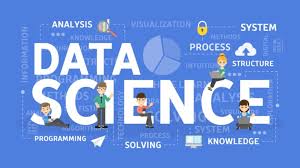
In today’s digital world, businesses rely on cloud-based solutions for efficiency and scalability. Two key models that have emerged in this space are Software as a Service (SaaS) and Data as a Service (DaaS). While both are cloud-based offerings, they serve different purposes.
SaaS provides businesses with software applications over the internet, eliminating the need for on-premises installations. DaaS, on the other hand, focuses on delivering data insights, analytics, and intelligence as a service.
In this article, we’ll break down the differences between SaaS and Data as a Service, their benefits, use cases, and how they impact businesses. If you’re exploring data solutions or data science services, understanding these concepts will help you make informed decisions.
What is SaaS?
SaaS, or Software as a Service, is a cloud-based software delivery model where users access applications via the internet. Instead of installing software on individual computers, businesses and individuals can subscribe to SaaS solutions, which are hosted on external servers.
Key Features of SaaS:
- Hosted and managed by a third-party provider
- Accessible from anywhere with an internet connection
- Subscription-based pricing model
- Regular updates and maintenance handled by the provider
- Scalable to accommodate different business sizes
Examples of SaaS Platforms:
- Google Workspace (Docs, Sheets, Gmail) – Cloud-based productivity tools
- Salesforce – Customer relationship management (CRM) software
- Dropbox – Cloud storage and file-sharing solution
- Zoom – Video conferencing platform
SaaS is widely used across industries for collaboration, automation, and operational efficiency without the need for complex IT infrastructure.
What is Data as a Service (DaaS)?
DaaS, or Data as a Service, is a model that delivers data storage, processing, and analytics via the cloud. Unlike SaaS, which focuses on software applications, DaaS is about providing real-time access to valuable data that businesses can use for decision-making.
Key Features of DaaS:
- Cloud-based data storage and management
- Data analytics and AI-powered insights
- Subscription-based or usage-based pricing models
- Integration with business intelligence (BI) tools
- Secure data sharing across different platforms
Examples of DaaS Platforms:
- Snowflake – Cloud data warehouse for businesses
- Google BigQuery – Serverless data analytics
- IBM Watson – AI-powered data analytics and insights
- AWS Data Exchange – Marketplace for data providers and consumers
DaaS allows organizations to access, analyze, and utilize data without maintaining large-scale data infrastructure, making it an essential tool for businesses leveraging data science services.
Key Differences Between SaaS and DaaS
| Feature | SaaS (Software as a Service) | DaaS (Data as a Service) |
| Focus | Provides cloud-based software applications | Delivers cloud-based data access and analytics |
| Purpose | Enables users to perform specific tasks (e.g., CRM, collaboration) | Provides businesses with data insights and intelligence |
| Pricing Model | Subscription-based (monthly/annually) | Subscription-based or pay-as-you-go based on data usage |
| Infrastructure Management | Managed by the service provider | Data hosting and analytics managed by the provider |
| Users | Businesses and individuals needing software solutions | Businesses needing real-time data insights and analytics |
| Examples | Google Workspace, Salesforce, Zoom | Snowflake, Google BigQuery, AWS Data Exchange |
While both models leverage cloud technology, SaaS focuses on providing software, whereas DaaS focuses on delivering data-driven insights.
Why Businesses Use SaaS and DaaS?
Advantages of SaaS for Businesses
- Cost-effective – Eliminates the need for expensive on-premises software.
- Scalability – Grows with business needs without major IT investments.
- Ease of Use – User-friendly interfaces accessible from any device.
- Automatic Updates – Ensures the latest features and security patches.
Advantages of DaaS for Businesses
- Better Decision-Making – Provides real-time data insights.
- Reduces IT Complexity – No need to manage in-house data servers.
- Data Accessibility – Access data from anywhere, anytime.
- AI and Machine Learning Integration – Enhances analytics and business intelligence.
For companies seeking data science services, DaaS can be a game-changer, offering real-time analytics, predictive modeling, and AI-driven insights.
How SaaS and DaaS Work Together
Many businesses use both SaaS and DaaS together. For example:
- A SaaS-based CRM (like Salesforce) can integrate with a DaaS platform (like Snowflake) to analyze customer behavior.
- A marketing SaaS tool can pull data from a DaaS provider to optimize ad campaigns.
- Financial firms use SaaS-based accounting software combined with DaaS solutions to track real-time market trends.
By combining SaaS applications with DaaS platforms, businesses can optimize their operations, enhance customer experiences, and make data-driven decisions.
FAQs
What is the primary difference between SaaS and DaaS?
SaaS provides cloud-based software applications, while DaaS delivers data storage, analytics, and insights as a service.
Can a company use both SaaS and DaaS?
Yes, many businesses integrate SaaS tools with DaaS platforms to enhance functionality and make data-driven decisions.
Is DaaS useful for small businesses?
Yes! DaaS eliminates the need for expensive data infrastructure, making it accessible for businesses of all sizes.
What are some common use cases of DaaS?
DaaS is used for business intelligence, predictive analytics, customer insights, and AI-driven decision-making.
How do SaaS and DaaS impact data security?
Both models implement cloud security measures, but DaaS providers must ensure strict data compliance and encryption since they handle sensitive information.
Which industries benefit most from DaaS?
Industries like finance, healthcare, e-commerce, and marketing heavily rely on DaaS for real-time analytics and decision-making.
Conclusion
Both SaaS and Data as a Service (DaaS) play a crucial role in modern business operations. While SaaS focuses on delivering software applications, DaaS provides access to valuable data insights that drive strategic decisions.
For businesses looking to integrate advanced data analytics, AI-powered insights, and scalable data solutions, leveraging DaaS through expert data science services can be highly beneficial.
By understanding the differences and potential synergies between SaaS and DaaS, businesses can make smarter investments in cloud-based solutions. Whether you need software tools, data-driven decision-making, or a combination of both, choosing the right model is key to staying competitive in the digital age.